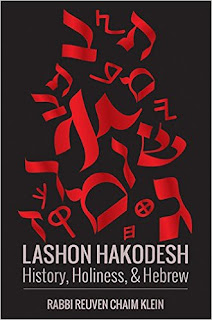Succos Inspired
Rabbi Moshe Gersht
Mosaica / 225 pages
Succos Inspired, as its name implies, is full of
inspirational divrei Torah relating to Sukkot. It contains fifteen chapters that
are divided into four units. Each unit focuses on a particular theme of the holiday.
For example, the first unit is an extensive discussion on the meaning of the Clouds
of Glory and their connection to Sukkot. One of my favorite pieces in this unit was the fascinating
connection between the famous dispute on whether one should engage in full time
study, or rather, work in order to make a living (the dispute between Rabbi
Shimon Bar Yochai and Rabbi Ishmael) and the different interpretations of the symbolism
of the Sukka (the dispute between Rabba and Rava).
The second unit focuses on the mitzva of dwelling in the Sukka. The third unit is on the arba minim, with some especially neat teachings
on the arba minim that I am seeing for the first time. And, finally, the fourth
unit “The Soul of Succos” is a ‘variety’ unit, including entries on Shemeni
Atzeret and Simchat Torah.
The essays are spiced with other related teachings and
welcome tangents, as well. There is much emphasis on simcha, unity and ahavat yisrael that Sukkot has to offer. Here’s an excerpt that can be "given over" at the Shabbat or Yom Tov table:
The
Tur says that the chag of Succos is related to Yaakov Avinu:
•
Avraham Avinu: Our pillar of chesed
corresponds to the human action of resembling Hashem.
Avraham’s
forte was kindness, representing the right hand, the dominant side through
which our actions are performed. The verse says Avraham comes from the words av
hamon goyim, meaning the “father
of many nations.” All
nations (Jewish and non-Jewish) have the ability to express their creativity
and potential.
•
Yitzchak Avinu: Our depiction of avoda
and self-nullification corresponds to emuna
and awareness of Hashem. Yitzchak was offered as a
sacrifice and was found praying in the fields. He is likened to the left hand,
as it is weaker in its ability to express ourselves. It is in this weakness
that Yitzchak found his strength
— recognizing that we are weak
without Hashem and our power comes from that connection. Yitzchak comes from
the word schok, to
laugh. With his perspective, he was able to laugh at his yetzer
hara and the physical world that attempts
to pull us away from our mission.
•
Yaakov Avinu: The face of Torah and truth. He
spent his youth learning Torah and his life living by its principles. He
represents the middle path — the
balance between human ingenuity and simple faith in Hashem. He specialized in
fusing the two worlds together. When he learned Torah and performed the
mitzvos, he connected the will of Hashem to the actions of a person by way of
the material world we live in. The Torah is the vehicle that connects the
heavens and the earth. Yaakov is spelled Yud–Akev.
The letter yud represents
the world of spirituality. The Midrash says that Olam Haba was created with the
letter yud and
Olam Hazeh with the letter hei. Akev means
heal, the very bottom of the body. Yaakov had the ability to connect the worlds
of the heavens to the very bottom of the earth.
Avraham
and Yitzchak are like the walls and the sechach:
•
Just like Avraham Avinu, the walls of the succah represent our ability to
contain and express Hashem in the world.
•
Similar to Yitzchak’s view
of reality, the sechach symbolizes
our capacity to recognize that Hashem is always watching over us.
•
Together, the characteristics of Avraham and Yitzchak create a succah that forges
a balanced relationship between the two. It is for this balance that Succos
corresponds to Yaakov Avinu, the balance between both dimensions.
This book may very well be the first English language, exclusive
Sukkot reader, that focuses on hashkafa, rather than halacha. The essays are
interesting and well-written. The author promised us a book that will
inspire us for Sukkot, and he has delivered.
To order: http://mosaicapress.com/succos-inspired/


